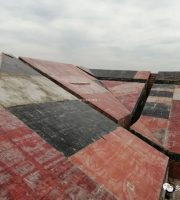White sugar can play a role in retarding setting, but if excessive white sugar is added, the concrete will not solidify and become a puddle of mud.
After a period of time, these concrete mixtures will solidify.
In addition to sucrose, glucose and fructose can effectively prolong the setting time of cement.
In addition, in some special projects, if more construction time is required, an appropriate amount of white sugar can be added to buy more time.
The component of ordinary portland cement the growth of hydrated calcium silicate crystals in the hydration reaction solidification process of cement at present, some researchers at home and abroad have conducted in-depth research on why sugar can prolong the cement solidification time, but the mechanism has not been fully understood.
The main stream view is that after sucrose is dissolved, sucrose molecules will be adsorbed on the formed hydrated calcium silicate surface, thus preventing the further growth of hydration products.
We can make full use of this property when we need it.
But these need to strictly control the amount of sugar.
If it cannot be treated in time, the control room will be inoperable after the cement solidifies, and the subway system will collapse.
Generally speaking, one is to prevent accidents, and the other is for some special projects.
But it is not necessary to add sugar at any time.
In addition, common retarders include sodium gluconate, lignosulfonate, etc.
The retarding property of white sugar is not only bad for us.
Once, some French anti-government activists secretly added sugar to the cement used by the French government to build prisons, making it difficult for these concrete to set, so as to hinder the government from building prisons.
In case of some accidents, the addition of sugar can prevent the solidification of concrete, so as to prevent the loss caused by the internal solidification of concrete.
Generally speaking, the mixed concrete will solidify within a few hours.
At this time, the workers bought a large amount of sugar from the nearby convenience store, sprinkled it into the concrete that had not yet fully set, and kept stirring it.
In fact, sugar can retard the setting of cement.
Comparative experiments have been done, and it is found that the retarding effect of sucrose on cement is the best.
They seem to be two different things, but they are really a little related.
After standing for 60 minutes, the concrete without sugar in the left cup has hardened, and the concrete with sugar in the right cup has not hardened.
So why can adding sugar to cement prevent it from hardening? The main reason why cement hardens is that the main components of cement, such as tricalcium silicate and dicalcium silicate, will react with water to produce hydrated calcium silicate and calcium hydroxide.
In 2014, when an elevator shaft in London underground station was poured with concrete, it leaked, and the leaked concrete directly flooded the control room of the subway line.
For example, some concrete mixers will always be equipped with some sugar.
At the same time, the retarding effect of white sugar will slow down the rate of heat release during cement solidification, thereby reducing cement cracking.
Copyright statement: the article comes from the Internet and is only for learning and communication.
It happened once, and sugar helped a lot.
If there is infringement, please contact and delete it…
Sure enough, the concrete soon turned into a puddle of mud, which could be scooped away directly, so the leaked cement was soon treated, and white sugar made a great contribution.
Usually, during construction, cement will be mixed with water, sand, stones, etc.
What’s the use of adding sugar to the concrete? Is it a waste? What is the use of adding sugar to concrete? Concrete and sugar are used to build houses and eat.
In addition, the generated calcium sucrose will also be adsorbed to the surface of cement particles, resulting in increased repulsion between particles, making it difficult to reunite, thus delaying the hydration of cement, improving the plasticity of concrete, and prolonging the setting time.
Cement is the most commonly used kind of building materials.
When concrete solidifies to form hydrated calcium silicate crystals, many tiny hydrated calcium silicate crystal nuclei will be formed first, and then the crystal nuclei will gradually grow and interweave with each other to form strength.
But it’s puzzling that some workers will add sugar to the concrete during some construction.
to form a concrete mixture, which will then be poured.





